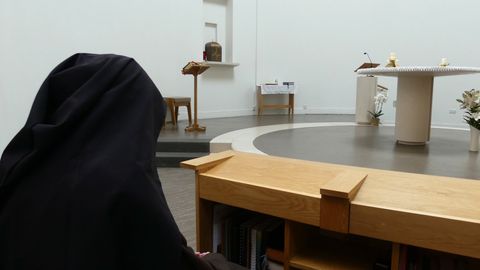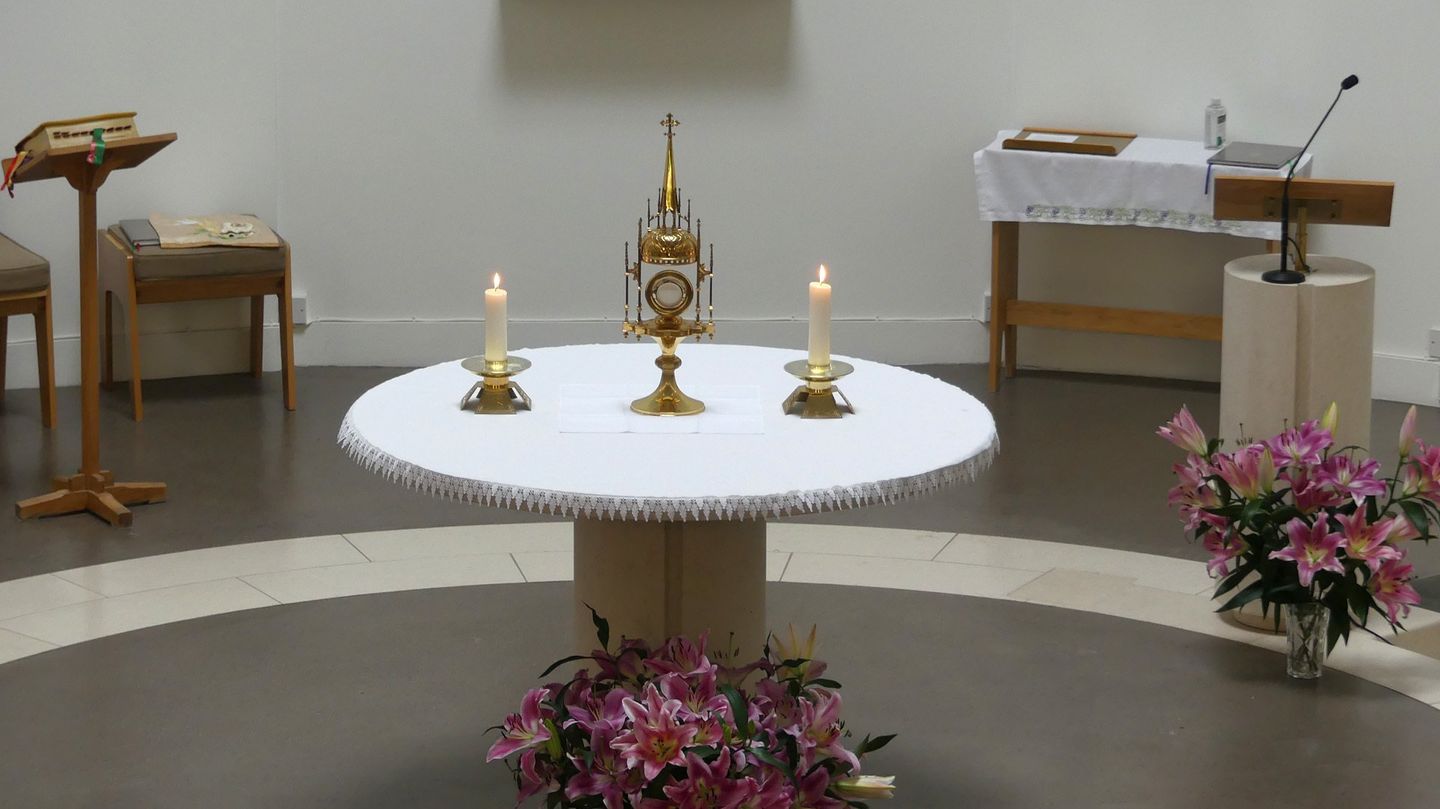Prayer
“Since prayer is an ‘intimate sharing between friends, a frequent lingering in solitude, with him who we know loves us’, it involves every aspect of the nuns’ being. It informs their life with faith, hope and love
that marks out the path leading to evangelical sanctity.”
Constitutions 78
“The Church expectantly asks all Teresian monasteries to enter deeply into the mystery of contemplative prayer and to offer an exemplary witness to it among God’s people.”
Constitutions 60
Prayer as relationship
The vocation to Carmel is a call to a life of prayer on behalf of the Church and of all people: it is the reason for a Carmelite’s existence. For St Teresa, prayer means friendship with God. Growing in friendship takes time and so it is with God. Like all relationships, prayer requires effort, constancy and perseverance. St Teresa herself learned to pray through much struggle and discipline, as do we all.
Prayer as mission
The Carmelite day is built on a rhythm of prayer which flows from the Eucharist, the focal point of our day: two hours of silent prayer; the Liturgy of the Hours which is the Prayer of the Church and a daily period of spiritual reading combine to create an atmosphere conducive to growth in God.
Crucially, this prayer is at the service of others in the Church and throughout the world: when Carmelites are asked to pray for a particular need the request is put into the prayer of Carmel and held in God’s presence. As the Catechism of the Catholic Church (2793) says, 'The baptized cannot pray to 'our' Father without bringing before him all those for whom he gave his beloved Son. God's love has no bounds, neither should our prayer.'
“The obligation of praying and contemplating cannot be confined to participating in prayer at stated times. On the contrary, in the spirit of the Rule, it must permeate the entire existence
of the Discalced Carmelite Nuns. ”
Constitutions 61
“The Church expectantly asks all Teresian monasteries to enter deeply into the mystery of contemplative prayer
and to offer an exemplary witness to it among God’s people.”
Constitutions 60
Prayer as relationship
The vocation to Carmel is a call to a life of prayer on behalf of the Church and of all people: it is the reason for a Carmelite’s existence. For St Teresa, prayer means friendship with God. Growing in friendship takes time and so it is with God. Like all relationships, prayer requires effort, constancy and perseverance. St Teresa herself learned to pray through much struggle and discipline, as do we all. The Carmelite day is built on a rhythm of prayer which flows from the Eucharist, the focal point of our day: two hours of silent prayer; the Liturgy of the Hours which is the Prayer of the Church and a daily period of spiritual reading combine to create an atmosphere conducive to growth in God.
Prayer as mission
Crucially, this prayer is at the service of others in the Church and throughout the world: when Carmelites are asked to pray for a particular need the request is put into the prayer of Carmel and held in God’s presence. As the Catechism of the Catholic Church (2793) says, 'The baptized cannot pray to 'our' Father without bringing before him all those for whom he gave his beloved Son. God's love has no bounds, neither should our prayer.'
St Teresa, through her experience and insights, became an acknowledged teacher on prayer. Her writings The Way of Perfection
and The Interior Castle
are considered spiritual classics.



